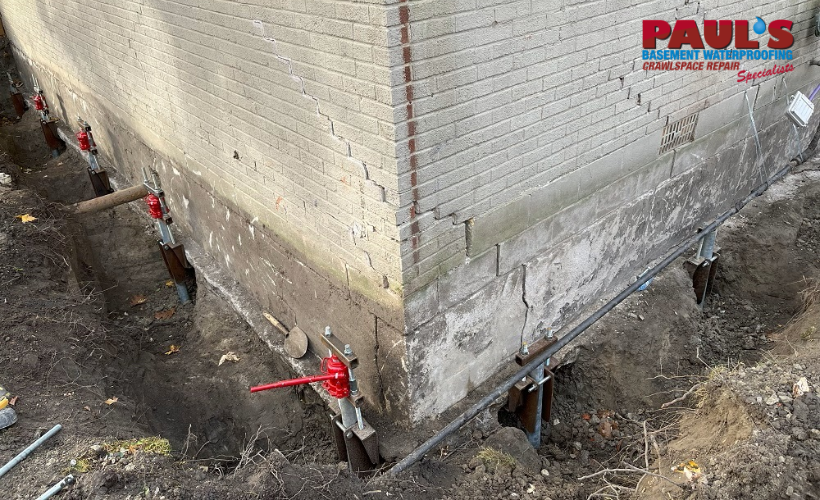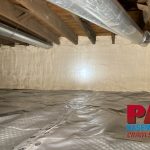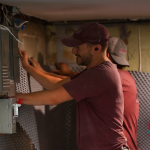Basement underpinning provides Windsor homeowners with an effective solution for foundation problems and low basement ceilings. This construction technique strengthens your home’s foundation while creating more usable living space. Paul’s Basement Waterproofing offers professional basement underpinning services throughout Windsor and Essex County. This guide explains what homeowners can expect during the underpinning process.
Understanding Basement Underpinning
What Is Basement Underpinning?
Basement underpinning deepens and strengthens an existing foundation. The process extends your foundation to rest on more stable soil or increases your basement ceiling height. Many Windsor homes, especially older properties, benefit from underpinning when owners want additional living space or need to fix foundation issues.
Why Windsor Homes Need Underpinning
Windsor homes often require underpinning due to specific regional conditions. The clay soil in Windsor expands and contracts with seasonal moisture changes, causing foundation movement over time. Properties near the Detroit River and Lake St. Clair face high water tables that create persistent moisture problems. Historic neighborhoods contain many homes with aging foundations showing structural weakness. Most older basements have low ceiling heights that limit usability. Serious foundation damage from flooding or poor drainage also makes underpinning necessary for many Windsor homeowners.
The Basement Underpinning Process
Assessment and Planning
The process begins with a thorough foundation assessment. Paul’s Basement Waterproofing experts examine your foundation, identify structural issues, and measure your current basement height. They test soil conditions and locate utility lines that might affect the project. This evaluation determines if underpinning makes sense for your specific situation. Afterward, professionals create a detailed plan that meets Windsor building codes and addresses your foundation needs.
Permits and Preparation
Before work starts, you need permits from Windsor municipal authorities. Paul’s Basement Waterproofing helps navigate this process by filing permit applications and providing required documentation. They ensure compliance with local building regulations and schedule necessary inspections.
Proper preparation creates a safe work environment. Contractors protect your property with barriers and coverings. They install temporary support structures to maintain home stability during excavation. All utility lines get marked and protected to prevent service disruptions. The team sets up dust containment systems and guides you on removing basement items before work begins.
Excavation Process
The excavation phase follows a methodical approach. Workers divide your foundation into manageable sections and dig beneath one segment at a time. This careful sequencing prevents structural instability. Each newly underpinned section must cure properly before work continues to adjacent areas. Excavated soil gets removed continuously to maintain a clean worksite.
For homes with water table issues, contractors install drainage systems during this phase. These systems direct groundwater away from your foundation to prevent future moisture problems.
New Foundation Construction
Once excavation reaches the designed depth, workers create forms for the new concrete foundation. They install reinforcement steel throughout to provide strength to the structure. Fresh concrete gets poured into these prepared sections and cures under controlled conditions. Engineers inspect each new foundation section to verify it meets structural requirements before work proceeds.
The strengthened foundation provides better support for your home while increasing basement ceiling height. This new concrete base resists soil movement and moisture infiltration, addressing common foundation problems Windsor homes experience.
Floor Installation and Finishing
After completing foundation work, contractors install a new basement floor. They place a gravel base for drainage and add a vapor barrier to prevent ground moisture penetration. The team pours a concrete floor with proper slope for water management. After curing, the surface receives appropriate finishing based on your specifications.
Final steps include waterproofing solutions, wall sealing, and utility reinstallation. These measures transform your basement into a dry, comfortable, and usable living space.
Benefits of Basement Underpinning
More Usable Space
Underpinning creates greater headroom in your basement. This increased height transforms previously cramped areas into comfortable living spaces. The process adds valuable square footage without expanding your home’s footprint. Many Windsor homeowners convert their underpinned basements into rental apartments, recreation rooms, home offices, or fitness areas. The improved ceiling height also allows for larger windows that bring more natural light into the space.
Stronger Foundation
Windsor’s soil conditions make foundation stability crucial for homeowners. Underpinning extends your foundation to more stable soil layers, providing stronger support for your entire house. This reinforced foundation resists the soil movement common in the region. The improved structure offers better load-bearing capacity, allowing for renovations that might not have been possible before. Homeowners gain peace of mind knowing their home stands on a solid, properly engineered foundation.
Increased Property Value
Real estate data confirms that basement underpinning increases Windsor home values. Adding functional living space effectively increases your home’s usable square footage, a key factor in property valuation. The process addresses structural concerns that would otherwise reduce your home’s marketability. Properties with properly underpinned basements typically command higher selling prices in the Windsor market. Many buyers specifically seek homes with finished basements, which underpinning makes possible in older properties.
Improved Moisture Control
Many Windsor homes struggle with basement moisture due to the region’s soil and water table conditions. Underpinning projects typically include comprehensive waterproofing measures that reduce groundwater infiltration. These improvements prevent mold and mildew growth that damages property and affects health. A properly waterproofed basement protects your belongings and creates a healthier indoor environment. Reduced basement humidity also improves comfort throughout your entire home.
Choosing the Right Contractor
Basement underpinning requires specialized knowledge that not all contractors possess. Look for professionals with proper licensing for Windsor and Essex County. The ideal contractor has specific underpinning experience in the local area and understands Windsor’s unique soil conditions. Verify that any contractor carries comprehensive insurance coverage to protect both their workers and your property.
Before hiring, ask potential contractors about their experience with similar Windsor projects. Discuss how they’ll handle permits and what support systems they’ll use during construction. Inquire about their approach to water management and what warranty they offer on completed work.
Paul’s Basement Waterproofing provides free consultations to Windsor homeowners considering basement underpinning. Their transparent approach helps you understand exactly what to expect throughout your project.
Cost and Timeline Expectations
Project Costs
Several factors influence underpinning costs. Your foundation’s current condition affects the amount of work required. The desired basement height increase impacts excavation volume and material needs. Your basement’s square footage determines overall project scope. Soil conditions influence excavation complexity and structural support requirements. Homes with existing moisture problems may need additional waterproofing beyond standard underpinning.
While underpinning represents a significant investment, Windsor homeowners typically see substantial returns. The increased property value often recoups much of the cost when selling. Gaining additional living space without moving saves the considerable expense of relocation. The improved foundation prevents costly future repairs. Many homeowners generate rental income from newly created basement apartments.
Project Timeline
Basement underpinning typically follows this schedule in Windsor homes:
Assessment and planning: 1-2 weeks
Permit acquisition: 2-4 weeks
Preparation and setup: 1 week
Excavation and foundation work: 3-6 weeks
Floor installation and finishing: 2-3 weeks
The total project typically takes 2-4 months from start to finish, depending on your home’s specific conditions and project complexity.
During construction, you should expect some disruption to normal household activities. Some phases may require temporary relocation, particularly during major excavation or concrete pouring. Occasional utility interruptions occur as contractors protect or relocate service lines. The construction process creates noise and dust during working hours, though contractors take measures to minimize these disturbances.
Paul’s Basement Waterproofing works with Windsor homeowners to reduce inconvenience during the underpinning process. Their experienced team plans work carefully to maintain household function while delivering quality results.
Contact Paul’s For Basement Underpinning
Basement underpinning offers Windsor homeowners a valuable solution for foundation problems and limited basement space. The process strengthens your home’s foundation while creating additional living area. Understanding what’s involved helps you make informed decisions about this significant home improvement project. Paul’s Basement Waterproofing provides professional basement underpinning services to Windsor and Essex County residents, ensuring durable results that enhance your home’s value and functionality for years to come.







